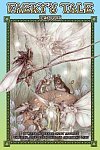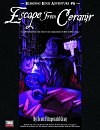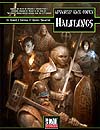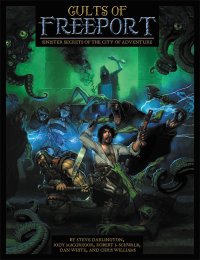Now Available: Hero High Villains
/in Green Ronin News /by Evan Sass Fresh from the laboratory at Ronin Arts, Hero High Villains is now available in our Green Ronin Online Store. Ten new villains for your Hero High campaign, for only $4.95? That’s right. For less than fifty cents per villain, you can strike terror into the hearts of your players. Get yours today!
Fresh from the laboratory at Ronin Arts, Hero High Villains is now available in our Green Ronin Online Store. Ten new villains for your Hero High campaign, for only $4.95? That’s right. For less than fifty cents per villain, you can strike terror into the hearts of your players. Get yours today!
The full villain list is included on the product’s catalog page, right here:
Hero High Villains
Hobby Games: The 100 Best Review on The Armchair Critic
/in Green Ronin News /by Evan SassBleeding Edge Adventures True20 Web Enhancements
/in Green Ronin News /by Evan SassWe have posted Web Enhancement PDFs for the first six of our Bleeding Edge Adventures products, detailing how to adapt these adventures to the True20 system.
In case you’re not aware of our Bleeding Edge series of adventures for the d20 System, they are designed to provide a fun alternative to the traditional fantasy dungeon crawl. They are all available in print and PDF. If you’re not sure, why not pick up Bleeding Edge Adventure #5, Temple of the Death Goddess, available at the special price of just $2.95 in both PDF and print!
Bleeding Edge Adventures True20 Web Enhancements
Freeport: A New Beginning
/in Green Ronin News /by Evan SassOver the last year or so, we’ve talked a lot about the Pirate’s Guide to Freeport, how it is a stat-less book and useable with any game system. Rather than kicking around about the hypothetical ways you can use Freeport, I thought I’d take a few hundred words to chat about some concrete ways to use the setting, specifically the Companion books. Our plan from the very beginning was to release a series of system-tailored support books that would adapt the setting information into mechanics. We started with the True20 Freeport Companion and are now prepared to release its follow-up volume, the d20 Freeport Companion (in editing right this very minute, by the way).
With the True20 sourcebook wrapped, I was ready to turn my attention to the d20 Freeport Companion. Like most other folks in the universe, I had my suspicions that the rules for the d20 system would be getting a face-lift and while I was reluctant to commit a lot of time and resources to spinning out a big fat d20 book, we felt the d20 Freeport Companion could serve as a fitting end to our company’s involvement with the 3rd edition rules. I mean, Green Ronin did release Death in Freeport on the very same day as the 3rd Edition Player’s Handbook. So how better than to go out than with one last 3rd Edition sourcebook for Freeport?
Naturally, I thought this project would be a breeze. It was to be a collection and updating of other Freeport books, right? Wrong. Not only did iconic characters need to gain levels, but also, in many cases, many of the mechanics needed polish, in some cases a lot of polish. Since the early days of the d20 system, designers have learned a lot about what works and what doesn’t. I don’t think anyone still thinks a feat that grants a +2 bonus to two skills is a great idea and similarly no one’s going to take a feat that provides a flat bonus to some part of your character sheet, especially not when there are hundreds, if not thousands, of sourcebooks that already have plowed the same field until nothing will ever grow there again. To make matters worse, many of the feats, spells, and magic items have seen similar variations in “official” products, from the DMG to more recent magic item and spell collections sourcebooks. Why in the hell would I present a spell that grants a swim speed when I know there’s one in a D&D book? I wouldn’t because not only do you loyal readers not need that sort of thing, but you probably already have that spell twice or more times in some variation or other. The task was once again greater than the pitch and so I began the process of hammering out rules that would see use around your gaming tables.
So what’s inside the d20 Freeport Companion? Well, lot’s of stuff. More stuff than there should be in this book. You see, I have a problem with over-writing. Give me a 100,000 word sourcebook, I’ll give you 160,000 words every time. Just look at Black Industries’ Tome of Corruption if you don’t believe me. That book has more stuff in it than it ever should have. Oh well.
For today, however, let’s focus on classes. This one was a strange section of the book, largely because much of the material that went here came from the incredibly non-existent Advanced Class Codex. I had big plans for that one and that it never materialized wakes me up at night from time to time. Sorting through all of the classes that have appeared in a d20 sourcebook from Green Ronin over the last eight years revealed a great deal. We produced a lot of classes. Of course, not all of them fit the flavor of Freeport and others needed a lot of work to bring them into the dusk of 3.5, and others still just made my head split open and brain fall out on the floor. Some of these classes were in various states of development and redesign, others were on their fourth or fifth version (assassin, that’s you), while others were products of sudden inspiration. The ones we settled on were the assassin, corsair, monster hunter, noble, survivor, and cultist.
What took so long here was that when designing anything new for d20, you just can’t hold it up to the core selection of classes, nod, and be done. Once upon a time, you could say the core rulebooks were enough; if the class was on par with a fighter or wizard, life was grand. At one point, I even believed that all support mechanics should be almost as good as core mechanics, but not quite. But when warblades strolled onto the stage, when warmages could cast damage dealing spells with no save and no spell resistance, when a single 2nd-level spell could cripple the big nasty bad guy or when a psionic power could reduce all damage to the minimum values on the dice rolled for a negligible power cost, suddenly Power Attack with a two-handed weapon wasn’t so bad any more and 1d4+1 points of automatic damage was nothing more than a cute quirk of the game. New classes, then, needed balls (forgive the Colbert-ism). They needed abilities to make them interesting combatants that would offer interesting tactical choices every round, could become viable alternatives to the crusaders, warlocks, and psions, and join this elite cast in kicking sand in the face of the wretched sorcerer and sissy bard.
I’m exaggerating a little. But I’d be lying if I said there was no such thing as rules creep. I resisted the temptation to go nuts and tried to cleave true to Freeport’s tone while also offering classes that would be viable alternatives to the dozens already out there. Long digression I know: Let’s take a look at these new classes before I jump on the plane to the west coast.
The Assassin
The assassin base class has been part of Green Ronin’s pantheon of classes for almost the life of the 3.x rules set. Now some naysayers out there might say D&D already has an assassin in the prestige class, but the trouble is that the assassin in the DMG, as fine as it is, prevents characters less than 6th-level from filling the classic niche, and also the prestige assassin offers spells, which is something many people disagree with. Others might say that the ninja fills a similar role, and to that I agree to an extent, but its eastern flavor makes it a tough sell for western style games. The assassin in the d20 Freeport Companion embraces much of what makes the prestige assassin cool, while ensuring the class is different from the ninja counterpart.
The heart of the assassin class (if you can say it has one!) is murder. A fighter is a killer, but when an assassin strikes, it’s rarely on even footing and almost always involves some sort of trick to take out the opponent as quickly as possible. Poisons, backstabs, and the ability to vanish into the shadows makes the assassin a versatile character, useful in supporting the frontline warriors.
One thing that makes the new assassin class stand out is customizability. People tend to gravitate toward classes that give them choices in their class features. The fighter, monk, and ranger are all great examples of classes that give players the tools to individuate their character beyond the standard options of feat and skill point allocations. The assassin follows suit and starting at 3rd level gains an ability called “tools of the trade.” Each time the character gains this ability, the player can select one of several options including the mundane (Weapon Focus), the cool (Intelligence to initiative checks), to the super-specialized (ability to change a disguise rapidly). It’s true that some of these features offer small benefits, but when combined they can offer a specialized type of killer a significant advantage, allowing players to home in on their character’s schtick or to give GMs the tools they need to create powerful recurring villains bound to piss of the PCs for the life of the campaign.
The assassin appears as a special preview of the d20 Freeport Companion in issue #2 of Kobold Quarterly (http://wolfgangbaur.com/kobold_quarterly), if you want to get an early look. Tell Wolfgang I sent you.
The Corsair
Next up is the corsair class. Those of you who picked up the dark Crisis in Freeport already got a look at this class. Heck, some of you might be already using it. The corsair is close to the one in Crisis, but with a few added features to bring the class up to speed with some of the more notorious characters. Yes, yes, there’s the swashbuckler from the Complete Warrior, but this class is built for pirates, buccaneers, and other scum of the sea, and has a broadly different range of abilities.
The corsair’s primary game features revolve around maneuvering, finding ways over, under, and through obstacles. Corsairs are good climbers, swimmers, tumblers, and jumpers and their class features enhance these movement options. While one character might sway and pitch on a storm-tossed deck of a galleon, the corsair can zip around with little trouble.
Another important element of this class is corsair’s luck. A daily ability, the corsair can spend a use of this feature to gain a luck bonus equal to one-half his corsair levels on a single attack roll, check, or save. Naturally, you have to declare use of this ability before you roll, but it’s a damn good way to save your bacon when faced with a big nasty that clawed its way out of the abyss (that’s the James Cameron Abyss and not Demogorgon’s diaper Abyss, but both would work in this case, I suppose).
The Monster Hunter
Some of you might remember a proposed book from several ages ago. Called the Monster Hunter’s Handbook, it was to be another chapter in Green Ronin’s Master Class series. After some mishaps and scheduling issues, the book was scrapped and the concept shelved. Always intrigued by the Monster Hunter, but simultaneously dubious about how this class would be different from any other adventuring class, I wanted to take a stab at designing the class. Originally slated to appear in the ACC, it wound up in a dusty file only to be yanked out and stuffed into this book. Freeport seemed an appropriate enough place for folks who butcher monsters, so thus the class finally found a home.
So, how did I make the class distinct from the ranger? The first thing I did was take the customization method I discussed under the assassin and dialed it up to 11. The monster hunter gains a monster specialist ability at every even level. The first time, the player selects one “type” of monster gain the listed apprentice ability. When the next ability comes up, the player may improve his character’s specialization with the previously selected type or select another one. There are three degrees of specialization, so a monster hunter will eventually have to diversify.
The abilities offered are designed to combat a monster of a specific type. This said, the ability is broad enough to give the monster hunter use when fighting other critters. For example, a journeyman dragon hunter gets evasion, while an apprentice elemental hunter gains a resistance to a specific type of energy. Of course, there are some slight power differences: evasion compared to the ability to detect animals isn’t even in the same league. However, greater levels of specialization bring more powerful abilities, enabling players who make sub-optimal choices at the start to gain a boost as a reward for their commitment to their path.
The Noble
Shortly after the 3.5 edition hit the shelves, Green Ronin released the Noble’s Handbook, a Master Class sourcebook that provided a comprehensive rules set for running games set among the elite society of your fantasy world. A solid class with lots of support, it was a great book that took our favorite game in a new direction. Several years later, I felt it was time to revisit this class. I wanted to remain true to Rodney Thompson’s design, but give the noble a bit of a power boost for games that don’t necessarily involve noble houses.
The noble’s primary role is to lead and to lead the noble needed a bunch of abilities that would give him minions, give him tools to boost his allies, and also represent the noble’s connections. Since the original noble class gave the character the Leadership feat, I decided to ground the noble’s abilities there. Unlike other classes, the noble picks up and can use the Leadership at 1st level. The normal limitations on the feat prevent the noble from gaining a cohort until 3rd level. As well, a noble still can’t pick up followers until his score is at least 10, so there are some barriers to power. The noble uses his Leadership score for his inspire abilities. Like the bard, inspire allows the noble to boost his allies and weaken his foes. To do so, the noble makes a Leadership check (1d20 + his leadership) score and the effects last for a number of rounds equal to one-half the noble’s class level. The noble begins with one inspire ability, but as he advances, he gains more. Options include awe, competence, courage, complacency, fear, and several others, offering ways to distinguish nobles from each other.
The Survivor
Fans of Thieves’ World should recognize this class. Originally conceived by Patrick O’Duffy, this class was designed to provide an alternative to the more traditional unarmed fighter—the monk. The survivor gained a number of fighting abilities that provided boosts in combat. While the class worked well for Thieves’ World, I felt it could do with a bit of adrenaline for Freeport.
A survivor looks a lot like the monk, gaining improved unarmed damage, an AC bonus, and a slew of bonus feats, but she also gets a better attack bonus, Hit Dice, and damage reduction. Survivors are faster in combat, gaining boosts to initiative to let them act first to deliver devastating damage and send their foes reeling. As one might expect, the survivor gains a range of boosts to her unarmed attacks including shattering strike, which can overcome hardness and damage reduction, sickening strike for those special hits to the most vulnerable areas, devastating strikes, and staggering strikes. In short, the survivor is a vicious brute that pounds the crap out of his foes with his bare fists and has the toughness to take punishment and keep on fighting.
The Cultist
Last on the list is the infamous cultist. I have mixed feeling about NPC classes. They are never a viable option for PCs (hence their names), the Challenge Ratings never quite feel right, and then there’s this weird tendency for mixing NPC classes with PC classes to create completely inexplicable combinations. For instance, why would a commoner 1/fighter 1 ever have taken that first level in commoner? The same is true for an expert 1/rogue 1. What? Sure, the expert has a broad range of skills (any skill to be precise), but most of the skills an expert would pick in the first place are offered to rogues, bards, and wizards. So it was with great reluctance that I inserted the cultist NPC class into the book.
I think it was the Lovecraftian atmosphere pervading Freeport that pushed me over the edge as well as the inappropriateness of the cleric to characters who chant Cthulhu Fhtgan in their moms’ basements. The cultist could also mask her true nature by masquerading as an expert, commoner, adept, and aristocrat, thus concealing her true motives behind an interesting façade.
The cultist class is similar to the old one, but it clarifies its abilities, reorganizes the rates in which it offers sneak attack, and grants the cultist the fanatic ability. Fanatic allows the cultist to gain a bonus on an attack, check, or save equal to his insanity points, once per encounter. (Oh, did I not mention the d20 Freeport Companion has a brand-spanking new insanity system? It does.)
Well, I think that’s enough chatter about Freeport’s rebirth in d20 for now. Next time, we’ll discuss insanity and madness, delicious topics to be sure. Until then, I’ll leave you with a bit of love from Cradle of Filth…
Spatter the stars
Douse their luminosity
With our amniotic retch
Promulgating the birth
Of another Hell on Earth
—Cthulhu Dawn, Cradle of Filth
Now Available: Iron Age PDF
/in Green Ronin News /by Evan Sass The PDF version of Iron Age is now available in our Green Ronin Online Store.
The PDF version of Iron Age is now available in our Green Ronin Online Store.
They’re the best there is at what they do, and what they do isn’t very pretty. Go back to the grim days of the ’80s and ’90s, when super-vigilantes in leather and chains dispensed harsh justice. Iron Age looks at the darkest era of comic book history and how you can bring it to life in your Mutants & Masterminds game. It includes an overview of the period, how to create and run Iron Age characters and games, and details on the Iron Age of Green Ronin’s award-winning Freedom City campaign setting. Iron Age is a shotgun blast of super-powered crime, betrayal, and vengeance. It ain’t pretty, but someone has to clean up the streets.
Hobby Games: The 100 Best on Geekerati Podcast
/in Green Ronin News /by Evan SassHobby Games: The 100 Best editor James Lowder was recently on the Geekerati podcast, talking with show host Christian Johnson and the geekerati regulars about what you should be Watching, Reading, and Playing.
Hobby Games: The 100 Best is now available
Listen to Geekerati: What you should be Watching, Reading, and Playing
Big Product Update
/in Green Ronin News /by Evan SassA bunch of our print products are now available on store shelves, from fine internet merchants, and from our own Green Ronin Online Store.
 To make Hobby Games: The 100 Best, editor James Lowder locked 100 hobby game industry luminaries in 100 rooms with 100 typewriters, and tasked each one with writing about his or her favorite hobby game. It can be surprising to see which authors love which games. Game designer Mike Selinker, who wrote about the card game Bohnanza in Hobby Games 100, calls the book “Just about one of the coolest projects I’ve ever been associated with,” in the Pulp Gamer Pod Show. (Pulp Gamer: Inside Track 032. The bit about Hobby Games: The 100 Best is about 30 minutes in, but do listen to the whole show, as these guys are quite entertaining.)
To make Hobby Games: The 100 Best, editor James Lowder locked 100 hobby game industry luminaries in 100 rooms with 100 typewriters, and tasked each one with writing about his or her favorite hobby game. It can be surprising to see which authors love which games. Game designer Mike Selinker, who wrote about the card game Bohnanza in Hobby Games 100, calls the book “Just about one of the coolest projects I’ve ever been associated with,” in the Pulp Gamer Pod Show. (Pulp Gamer: Inside Track 032. The bit about Hobby Games: The 100 Best is about 30 minutes in, but do listen to the whole show, as these guys are quite entertaining.)
Also now available in print from Green Ronin:
 The Paragons Campaign Setting for Mutants & Masterminds presents a world where “reality” doesn’t mean quite the same thing it used to, where the word “impossible” is used conditionally when it has any meaning at all, and where you will believe a man can fly, because there’s a good chance of seeing it on the evening news.
The Paragons Campaign Setting for Mutants & Masterminds presents a world where “reality” doesn’t mean quite the same thing it used to, where the word “impossible” is used conditionally when it has any meaning at all, and where you will believe a man can fly, because there’s a good chance of seeing it on the evening news.
 Play a pixie, brownie, sprite, or pooka in an enchanting storytelling game of imagination and wonder. Suitable for ages 6+, Faery’s Tale Deluxe is a perfect introduction to adventure games for children and adults.
Play a pixie, brownie, sprite, or pooka in an enchanting storytelling game of imagination and wonder. Suitable for ages 6+, Faery’s Tale Deluxe is a perfect introduction to adventure games for children and adults.
 Bleeding Edge Adventures #6: Escape from Ceranir: For centuries, the academy and fortress of Ceranir has kept the lands safe, but when no help emerged in the face of a terrible undead attack on the village of Erburg, the locals have become frightened and disturbed by the apparent silence from their protectors. Those messengers who have returned bring stories of an eerie silence, and no means to enter. It falls to a band of local heroes to solve the mystery of Ceranir and find out just what exactly happened to this famous stronghold.
Bleeding Edge Adventures #6: Escape from Ceranir: For centuries, the academy and fortress of Ceranir has kept the lands safe, but when no help emerged in the face of a terrible undead attack on the village of Erburg, the locals have become frightened and disturbed by the apparent silence from their protectors. Those messengers who have returned bring stories of an eerie silence, and no means to enter. It falls to a band of local heroes to solve the mystery of Ceranir and find out just what exactly happened to this famous stronghold.
Card Game Reviews
/in Green Ronin News /by Evan SassGamingReport.com has posted a review of our card game, Torches & Pitchforks.
"Hands down one of the most fun strategy card games around. Campy humor and classic horror are blended together perfectly." (Five Stars)
Torches & Pitchforks Review on GamingReport.com
A while back the fine fellows on The Spiel Podcast slipped a quickie review of our other card game, Walk the Plank, into the News & Notes section at the beginning of Episode 34, Bullet Barons. Quick summary of a quick review of a quick game: They like it.
Walk the Plank on The Spiel Podcast Episode 34
You can buy Green Ronin’s card games in our online store
Now Available: Advanced Race Codex: Halflings
/in Green Ronin News /by Evan Sass Advanced Race Codex: Halflings is now available in PDF format in our Green Ronin Online Store.
Advanced Race Codex: Halflings is now available in PDF format in our Green Ronin Online Store.
Advanced Race Codex: Halflings (PDF)

